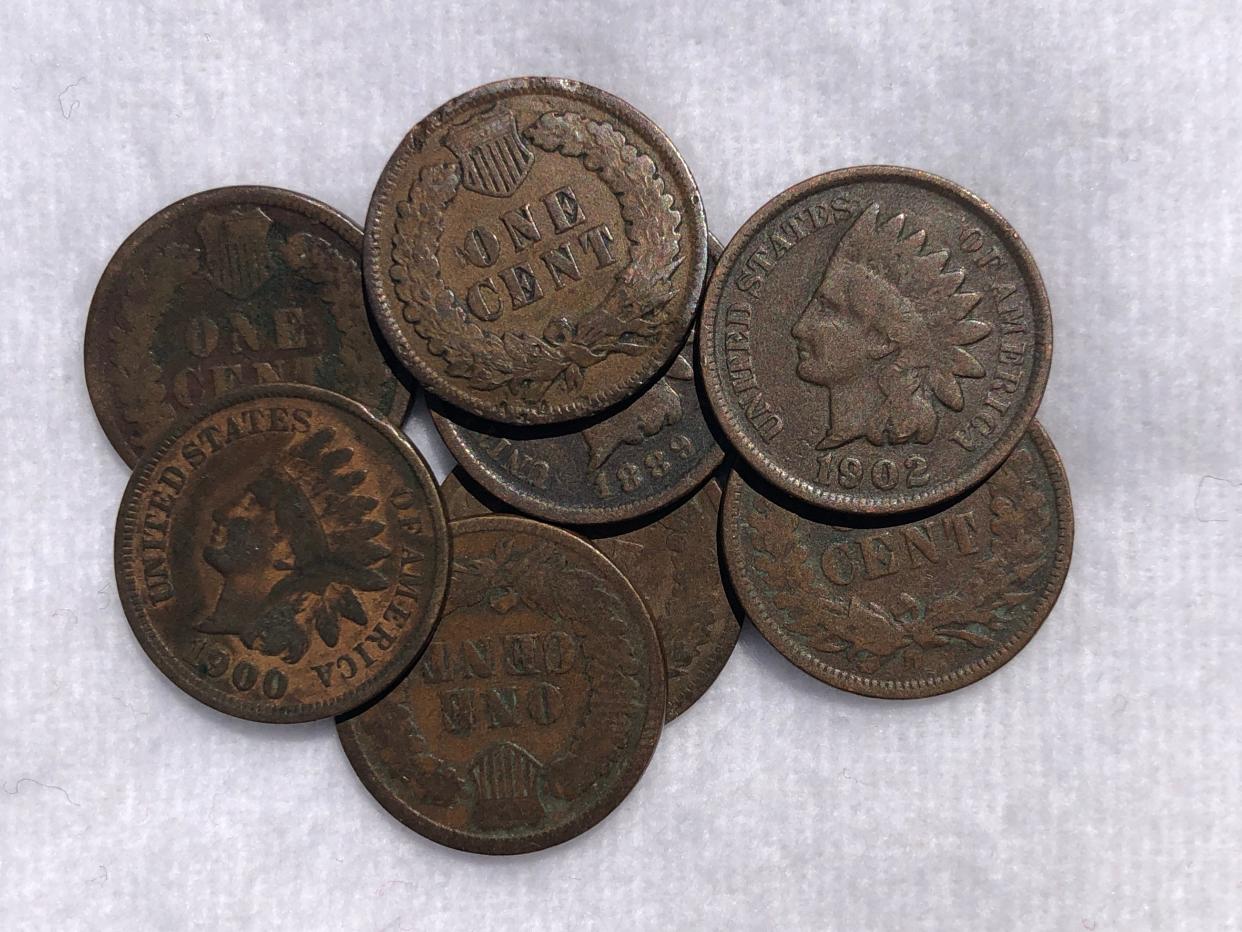Antiques: An Indian Head penny for your thoughts?

After a few warm huzzahs regarding last week's article on Buffalo nickels, let's keep with the theme this week but downsize to take a look at the Indian head penny.
A penny may not buy what it used to, but this particular coin represented a vital cog in the development of coin-operated machinery during the Industrial Revolution. Remember all those gumball machines? They ate a lot of pennies. And as such, it was also the first coin to surpass a total annual minting of 100,000,000 units in 1907. You may not find them in your loose change today, but they were pivotal coins in their era and are well worth a revisit.
Unlike the short 25-year life of the Buffalo nickel, the Indian Head penny was introduced before the Civil War and lasted a full half-century until being discontinued in 1909. The Honest Abe coin took it from there, but the Indian Head penny represented a substantial break from its much larger predecessor.
Up until 1857, the one cent piece was a copper coin nearly the size of a half-dollar. However, the Gold Rush had pushed the prices of nearly all commodity metals higher, and the United States Mint found itself losing money on every large cent it produced. To compensate, the mint introduced the much smaller Flying Eagle cent for just that one year, but they proved problematic to make and thus were replaced in 1858 with the Indian Head penny. To further reduce costs, its composition was changed to 88% copper and 12% nickel. While more copper was added later, this addition of base metal turned out to be consequential.
At first, the mint called for the larger copper cents and the small Spanish silver coins then in circulation to be redeemed for the new copper/nickel pennies, and people rushed to do so. However, there was suspicion in the south and west as to the inherent value of base metal coins, and many businesses refused to take them. At the time, there was no legal tender guarantee and no requirement for their use in commerce, so a surplus of Indian head cents quickly developed. It took demand resulting from the Civil War to reduce the excess supply, but by 1864 the Indian Head penny had become coin of the realm.
For the remainder of the 19th century, the mint struggled to find small denomination coinage that complemented the Indian head cent. Both the two-cent and the silver three-cent coins were discontinued in 1873, leaving only the penny and the odd three-cent nickel. The latter was introduced largely in response to the standard three-cent postage rate then charged by the U.S. Postal Service, but when the USPS reduced its standard rate to two cents it was abolished in 1880. Several years later, a few minor changes were made to the Indian Head cent design, and demand thereafter waxed and waned throughout the remainder of its life.
Up until the last two years, the Philadelphia mint was the source of all pennies, but the San Francisco mint came online in 1908 for a last gasp of production. Only about 309,000 cents were minted there during its final year (1909), making those among the most valuable of the lot. Today a 1909-S cent in even average condition is worth several hundred dollars, and those in exceptional shape can reach four figures. Sometimes it takes a lot of new pennies in order to buy an old one.
Mike Rivkin and his wife, Linda, are long-time residents of Rancho Mirage. For many years, he was an award-winning catalogue publisher and has authored seven books, along with countless articles. Now, he's the owner of Antique Galleries of Palm Springs. His antiques column appears Sundays in The Desert Sun. Want to send Mike a question about antiques? Drop him a line at info@silverfishpress.com.
This article originally appeared on Palm Springs Desert Sun: Antiques: An Indian Head penny for your thoughts?

